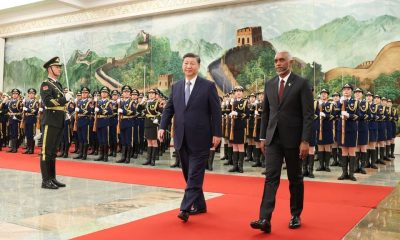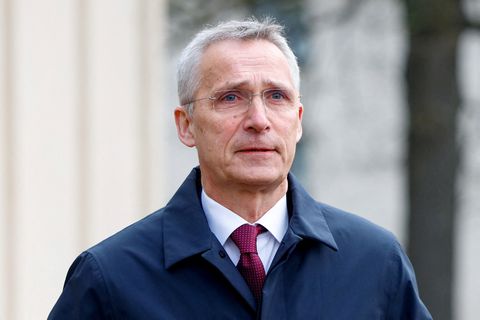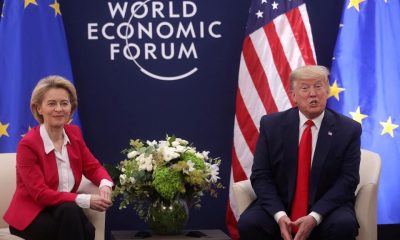global
Romania’s plan to boost Ukraine grain transit very achievable, minister says
As infrastructure projects progress, Romania’s goal of increasing the monthly transit capacity for Ukrainian grain through its Black Sea port of Constanta to four million metric tons is getting closer, according to the minister of transport, who announced on Thursday.
According to Minister Sorin Grindeanu, who was speaking following a meeting with officials from Ukraine, Moldova, the European Commission, and the United States to evaluate Ukraine’s most significant alternative export route for grains, the amount of grain that passed through Romania in October alone was a record three million tons.
“This shows there is room to reach 4 million tons,” added the economist. He also mentioned that a project that was sponsored by the European Union and aimed to permit passage on the Sulina canal of the Danube River, which leads to Constanta, around the clock had been completed and would become operational pending the training of any necessary staff members.
Moldova, which shares a border with Romania and Ukraine, was likewise working to improve its railroad infrastructure and checkpoints to facilitate traffic.
According to Oleksandr Kubrakov, the Deputy Prime Minister of Ukraine, the number of products exported via Romania has been over three million tons on average since the beginning of 2023. Of these, fifty percent were grain. Road checks have been significantly improved, but the current train infrastructure has not been utilized to its maximum potential.
With grains coming by road, train, or barge over the Danube, Constanta has become Ukraine’s major alternative export route since Russia invaded in February 2022. Ukraine is one of the top grain producers in the world, and Constanta has become the most significant alternative export route for Ukraine.
During January and October, the port administration informed Reuters that Ukraine delivered 11.7 million tons of grain through Constanta. This figure represents an increase from 10.5 million tons at the end of September to 8.6 million tons last year.
“The Danube corridor is the most effective of the solidarity lanes that the European Commission has put in place after the attack that Russia launched against Ukraine,” said Magda Kopczynska, the director general for mobility and transport at the European Commission.
“It will remain so not only now during the war, but it needs to remain an important connecting element when it comes to the transport integration of Ukraine and Moldova with the European Union.”
global
Zelenskiy, in Washington, urges Congress not to play into Putin’s hands.
In a speech that he delivered on Monday to a military audience in the United States, Ukrainian President Volodymyr Zelenskiy expressed his optimism that he can still depend on the United States and asked Congress not to play into the hands of Russian President Vladimir Putin. This statement came as Zelenskiy began a crucial visit to Washington to strengthen security support services.
We will not give up here. You can rely on Ukraine since we are aware of what to do. Zelenskiy’s address at the National Defense University included the following statement: “And we hope just as much to be able to count on you.”
The administration of Vice President Joe Biden has sent a warning to Congress, stating that if they do not extend their military support to Ukraine, it might shift the conflict, which has been going on for over two years, in Russia’s favor, which would create concerns for the national security of the West.
In a veiled allusion to disagreements in Congress about the distribution of aid, Zelenskiy stated that it was “crucial that politics… not betray the soldiers.”
“Allow me to tell you the truth, my dear friends. According to Zelenskiy, Putin and his sick clique are the only people who draw inspiration from unresolved issues on Capitol Hill.
Additionally, Zelenskiy has been extended an invitation to attend discussions with members of Congress and at the White House on Tuesday. Several Republican MPs have questioned the continuation of assistance to Ukraine.
At the beginning of the previous year, Russian President Vladimir Putin initiated an invasion of Ukraine, which resulted in a conflict that has resulted in the deaths or injuries of hundreds of thousands of people and has led to the most significant confrontation between Russia and the West in the last sixty years.
Ukraine was able to successfully repel Russia’s initial effort to sweep the nation and roll Russian forces back into critical towns on the strength of billions of dollars in military assistance from the United States as well as information from the United States. A significant counteroffensive assault that Kyiv attempted to launch this year was unsuccessful in penetrating Russian defensive lines. Russia is currently on the offensive in the eastern part of the country.
While providing pledges of “unshakable” assistance from the United States to Ukraine, Defense Secretary Lloyd Austin of the United States issued a warning that Vladimir Putin still harbored the prospect of achieving triumph in Ukraine.
Putin continues to think that he can outlast Ukraine and that he can outlast the United States of America, even though he has committed crimes and has been isolated. To which Austin responded with cheers, “But he is wrong.”
In what appears to be a reference to Congress, he continued by saying, “America’s commitments must be honored.”
However, since Republicans seized control of the House of Representatives from Democrats in January, Congress has not authorized any cash for Ukraine, even though it has approved more than 110 billion dollars for Ukraine since Russia’s invasion in February 2022.
According to statements made by Shalanda Young, the director of the United States budget, that were made last week, the United States Department of Defense had utilized 97% of the $62.3 billion in additional financing by the middle of November. The State Department had utilized all of the $4.7 billion in military support funds it had allotted for Ukraine.
Geopolitics & Foreign Policy
How Qatar swayed Israel and Hamas to make a truce work.
During the week when global leaders were praising Qatar for mediating a ceasefire between Israel and Hamas, Qatar’s negotiators discreetly increased their efforts to mediate the conflict. They were concerned that the ceasefire might fail before it had even begun.
Qatari officials worked through the night to help secure the crucial final details of a ceasefire that lasted seven days before hostilities resumed on Friday. This ceasefire allowed for the release of dozens of hostages held in Gaza in exchange for hundreds of Palestinian prisoners, and it also allowed for the flow of humanitarian aid into the shattered coastal strip. On Friday, Qatar announced it was working with both parties to negotiate a revised agreement.
According to Reuters, the most comprehensive account to date of how Qatar’s mediators in Doha helped to bridge the gap between Israel and Hamas on November 22 has been stitched together. It provides a peek at Qatar’s aggressive attitude in negotiations between what one source participating in the negotiations referred to as “two parties that have zero level of confidence in each other.”
According to Abdullah Al Sulaiti, a professional diplomat of Qatar’s primary negotiators, there were genuine concerns that the initial truce deal would never be implemented when presented to the public last week.
“I thought we were going to lose it and that the agreement wouldn’t fly,” he commented in an interview. “I thought we were going to lose it.” The terms of the agreement that covered the truce as well as the swaps of prisoners and hostages that accompanied it were not very specific.
According to sources in Qatar, the Palestinian Territories, and Egypt, who are acquainted with the high-stakes discussions, the negotiators from the tiny Gulf state were aware that Israel and Hamas had not yet reached an agreement on when or how the truce and the exchange would occur.
According to a source briefed on the discussions, it was vital to define all of the items in the agreement and ensure they meant the same thing to Israel and Hamas.
According to the source, who requested not to be identified due to the delicate nature of the discussions, the Israeli side had committed to “park” tanks that it was operating within the Gaza strip. However, none had agreed on what exactly that meant on the ground.
According to a source briefed on the discussions, Qatari Prime Minister Sheikh Mohammed bin Abdulrahman Al Thani cleaned up his itinerary to maintain his concentration. He did this by canceling excursions scheduled to take him to Moscow and London.
According to the source, Sheikh Mohammed initiated a new round of discussions on the afternoon of Wednesday, November 22, inside one of his offices in Doha. This occurred just a few hours after the truce was announced.
David Barnea, the head of the Israeli intelligence agency Mossad, and a group of Egyptian intelligence officials were present for the primary meeting of the Prime Minister. Barnea had arrived from Israel for at least the third time since the beginning of the conflict. The source claimed that the Qataris used a different area to call Hamas representatives who had stayed in their villa office across town.
An official from the United States who is aware of the situation and Egyptian security sources have stated that the Qataris’ approach to mediation was to be proactive and to throw their weight into discussions. This was in contrast to the traditional technique of just passing on signals from one side to the other.
An official from the United States stated that Doha had already utilized such strategies to press for solutions to overcome the gaps in demands that existed between Israel and Hamas. This was particularly noticeable when negotiators addressed the delicate matter of hostages before the initial declaration of a ceasefire.
In response to the comprehensive questions posed for this piece, neither the United States Department of State nor the Hamas political office in Doha responded. Mossad is under the supervision of the office of Israeli Prime Minister Benjamin Netanyahu, which refuses to comment on the matter.
According to statements made to the press by Qatar’s Ministry of Foreign Affairs, Hamas and Israel met in Doha until “the early morning” on November 23 and reached an agreement on a strategy to put the ceasefire agreement into effect the following day. In a particular story, it did not reply to a request for a comment.
THE TERM “POSTMEN”
At the beginning of the discussions, the administration of Netanyahu stated that it would not exchange Palestinian detainees detained in Israel for hostages held in Gaza. In 2011, Hamas was successful in obtaining the release of more than 1,000 Palestinian detainees who were being held in Israel in return for the release of one Israeli soldier. According to those aware of the discussions, Hamas made several demanding requests.
A compromise was reached between the two parties, which stipulated that there would be three Palestinian inmates for every civilian hostage.
The official from Qatar, who was participating in the discussions, stated that the most important thing was to make changes to the proposal that was being made by one party until it was acceptable to the other side.
According to what he stated, “We say ‘Listen, let’s have a second round of discussions with you before we send the proposal,'” he said while speaking under the condition of complete anonymity.
“If we decided to be like postmen and deliver letters only, I doubt that we would have finished this agreement.”
The person informed of the discussions stated that Qatari representatives worked the phones and traveled back and forth between several rooms on November 22.
To get a consensus on the precise location in Gaza where Israeli tanks would be stationed during the truce, Qatari mediators facilitated negotiations between Israel and Hamas. Similarly, they mediated an agreement over how Israeli forces would fulfill a demand presented by Hamas to evacuate Gaza hospitals, particularly Al Shifa, where they had taken positions, according to the source.
He added that the negotiators, some of whom have been active in Israel-Hamas mediations since 2014, also needed to hammer out a vital feature: a safety mechanism meant to ensure that any tiny breach in the ceasefire would not lead it to collapse. This was a crucial element that needed to be worked out.
According to him, they successfully got both sides to agree to particular processes they would be required to follow in the event of an incident. These procedures included a study of realistic scenarios such as gunfire or tank movements.
It was shortly after the truce went into effect that Israeli forces opened fire on Palestinians who were attempting to relocate to northern Gaza, according to the source. This triggered the mechanism, which was activated.
According to a readout of the call by the White House, Qatar’s Emir Sheikh Tamim bin Hamad Al Thani spoke on the phone with Vice President Joe Biden of the United States of America almost five hours into the summit. During their conversation, they addressed the execution of the arrangement.
A few hours after the marathon session had concluded, Qatar’s Ministry of Foreign Affairs announced that the ceasefire would go into effect in Gaza on Friday, November 24, at seven o’clock in the morning.
CONTACT THE MEDIATOR
As one of the very few nations that maintains an open line of contact with both Israel and Hamas, the gas-rich nation of Qatar has emerged as the primary go-to mediator in the conflict that has been going on for many weeks since the attack by Hamas on January 7. The United States of America and Russia also lauded the contributions made by their “Qatari friends.”
Qatar’s mediation efforts have also been met with criticism from Western nations. Specifically, lawmakers from the United States and Europe have accused the Gulf States of assisting Hamas, which they consider to be a terrorist organization.
When Sheikh Tamim arrived in Berlin a month ago, the ambivalence was displayed: “State visit by the blood emir,” read the banner title on the November 12 edition of the German daily Bild.
Officials from Qatar have stated that they started receiving representatives from Hamas in Doha in 2012, at the request of the United States government, following the removal of the political office of the Palestinian terrorists from Syria. According to Qatari sources, Israel carefully examines every money transfer that Qatar provides to Palestinians living in Gaza.
According to Mehran Kamrava, a professor of government at Georgetown University in Qatar, Qatar’s capacity to successfully negotiate in this dispute is likely the most essential aspect behind Qatar’s ability to do so. This is because Qatar has a personal relationship to the top members of the terrorist group.
Their words are, “Look. We have offered an office and logistical assistance at a considerable expense to our existing reputation.We were the only ones who were there for you when you needed us, and now is when you need to return the favor,” he said. “We are the only ones who were there for you.”
Even though Qatari negotiators were near Hamas officials, they did not communicate directly with the leaders of the group in Gaza. Instead, they communicated with Hamas representatives located in Doha. During the month and a half of intensive combat that preceded the truce on November 24, the communication chain was interrupted many times, at one point, for two full straight days. According to the person who was informed of the discussions, this was due to power outages or Israeli shutdowns.
Mossad frequently plays a diplomatic role in Israel’s contacts with Qatar. This is because the two nations do not have official diplomatic connections, a condition that, according to one Western source in the Gulf, helped to hold down the process.
Following the attack that took place on October 7 by the terrorist organization Hamas, Israel claims that gunmen murdered 1,200 people and abducted 240 captives. In reaction to this, Netanyahu has vowed to completely eradicate Hamas, which is the ruling party in Gaza.
The Israeli government responded by conducting a bombardment of the region for seven weeks, which resulted in the deaths of over 15,000 Palestinians, as reported by health officials in the coastal strip.
There have been around one hundred hostages freed from Gaza since the beginning of the ceasefire, including those who are not Israeli. A minimum of 210 Palestinians have been freed from Israeli prisons, and relief groups have been granted permission to boost the amount of fuel and humanitarian material that is being shipped to Gaza.
In an interview with Reuters, Al Sulaiti, the Qatari mediator, stated that his task was not yet over even though the truce had been effective.
“At the beginning, I thought that reaching an agreement would be the most difficult step,” said the government servant who has been involved in mediations between Israel and Hamas since 2014. “I’ve discovered that sustaining the agreement itself is equally challenging.”
The duration of the ceasefire was nearly precisely one week. In response to Israel’s accusations that Hamas had fired rockets and broken a commitment to release all of the women who were being held as hostages, hostilities escalated once again on Friday.
Geopolitics & Foreign Policy
UK’s Sunak brings back Cameron, sacks Braverman in new reset.
On Monday, British Prime Minister Rishi Sunak reinstated previous leader David Cameron as Foreign Minister following his dismissal of Interior Minister Suella Braverman for criticizing police.
Before the anticipated election of next year, the prime minister’s party is significantly trailing the Labour Party. This was his latest attempt at a makeover. The fact that Cameron returned implied Sunak preferred to bring in an experienced, more moderate figure rather than curry favor with his party’s populist right, which had backed Braverman.
Additionally, it rekindles the divisive debate over Brexit. Many in the party’s right-wing despised Cameron, who advocated for remaining in the EU during the 2016 referendum. Shortly after Britain decided to leave, he resigned.
Following mounting criticism of Braverman from opposition MPs and ruling Conservative Party members, Sunak reshuffled the cabinet, bringing in supporters and dismissing ministers he believed were underperforming.
When the notorious Braverman disobeyed him last week in an unapproved piece, charging police at protests with “double standards”—implying they were harsh on right-wing protestors but lenient on pro-Palestinian demonstrators—his hand was pressed.
Tensions between a pro-Palestinian march and a far-right counterprotest on Saturday resulted in about 150 arrests, according to the opposition Labour Party.
Even though her dismissal was expected, the party was rocked by Cameron’s selection, despised by conservatives who saw it as the ultimate “Brexit surrender” but hailed by those in the center.
“It has rarely been more important for this country to stand by our allies, strengthen our partnerships, and make sure our voice is heard,” said Cameron, expressing his gratitude for taking on his new post during a period of global upheaval.
“Though I may have disagreed with some individual decisions, it is clear to me that Rishi Sunak is a strong and capable prime minister, who is showing exemplary leadership at a difficult time,” he said on X, which used to be Twitter.
After leaving politics in 2016, Cameron can rejoin the administration by being appointed to the House of Lords, the parliament’s upper house.
BREXIT COMES BACK
According to lawmakers from the party’s moderate wing, the selection of Cameron would provide foreign expertise and convey a larger message to the nation.
One Tory legislator stated, using a term used to characterize historic Conservative-supporting districts in the south of England, “It’s a sign to the Tory blue wall and moderate voters, we aren’t heading to the right,”
There was concern among certain legislators that Braverman was bent on remaking the Conservatives as the “nasty party” due to her strict stance on immigration and social issues. Former Prime Minister Theresa May coined the phrase “nasty party” to convince the party to shake off its image of being callous.
However, some on the right felt much more enraged by Cameron’s reappearance than before her dismissal. They supported her protest posture and anticipated she would continue to be an outspoken advocate.
Additionally, several Brexit supporters said that the party’s “remain” wing had gained control because of Cameron’s involvement in the referendum.
The former foreign minister, James Cleverly, replaced Braverman. He declared his new responsibility was “to keep people in this country safe” and is regarded as a trustworthy individual.
When the Supreme Court rules on Wednesday over the deportation of asylum seekers to Rwanda, he will face his first legal challenge. Should the critical policy fail, some legislators would raise the clamor for Britain to withdraw from the European Convention on Human Rights.
With Braverman out of the picture, her emphasis may turn to getting ready for a potential future party leadership run should the Conservatives lose the anticipated election in the next year, as predicted by opinion surveys.
Sunak has been unable to close the roughly 20-point deficit that the Labour Party has maintained in the polls.
He attempted to reinvent himself as a champion of “change” during his party’s convention last month. Still, his message was overshadowed by an ill-advised move to shelve a portion of the largest train project in the nation.
Since Braverman’s piece was out on Wednesday, Labour had referred to Sunak as weak. Opposition MPs now claim that his appointment of Cameron was a desperate move.
“A few weeks ago Rishi Sunak said David Cameron was part of a failed status quo, now he’s bringing him back as his life raft,” said lawmaker Pat McFadden, coordinator of Labour’s national campaign.
“This puts to bed the prime minister’s laughable claim to offer change from 13 years of Tory failure.”
-
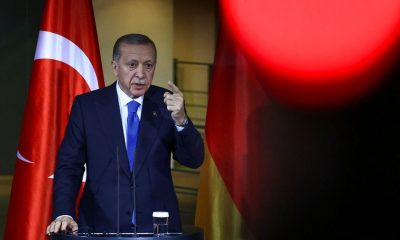
 Geopolitics & Foreign Policy2 months ago
Geopolitics & Foreign Policy2 months agoTurkey’s Erdogan says he may visit Egypt soon, discuss Gaza patients -media.
-
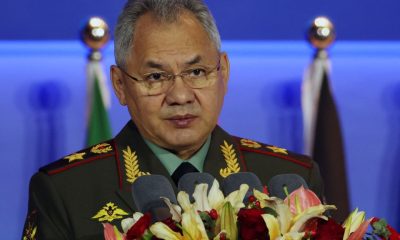
 Europe3 months ago
Europe3 months agoRussia’s Shoigu accuses the West of seeking to expand the Ukraine war to the Asia-Pacific.
-

 Geopolitics & Foreign Policy2 months ago
Geopolitics & Foreign Policy2 months agoCeasefire takes hold in Gaza ahead of hostage release; aid enters enclave.
-

 Geopolitics & Foreign Policy2 months ago
Geopolitics & Foreign Policy2 months agoRussia deploys new nuclear missile in Kaluga region – RIA
-
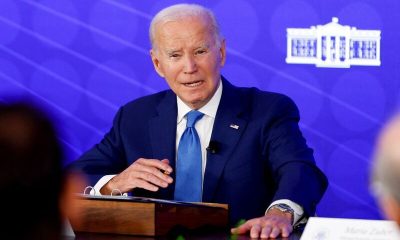
 America4 months ago
America4 months agoRepublican US House to hold first Biden impeachment inquiry hearing
-

 Geopolitics & Foreign Policy2 months ago
Geopolitics & Foreign Policy2 months agoChina’s military: US Navy ship ‘illegally’ entered territorial waters
-
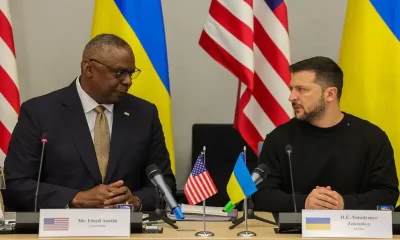
 Europe4 months ago
Europe4 months agoZelenskiy, at NATO HQ, asks for weapons to face winter of ‘terror’
-
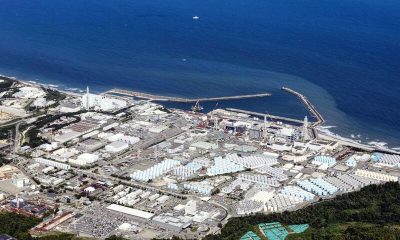
 Agriculture5 months ago
Agriculture5 months agoIAEA, Japan agree on continuous safety review of Fukushima water




